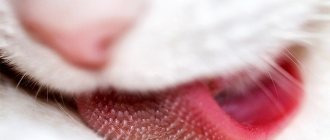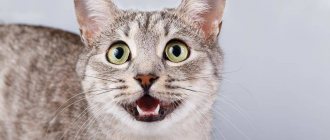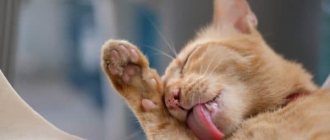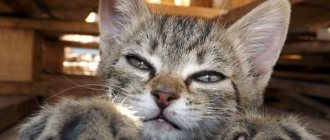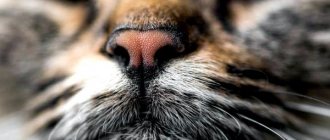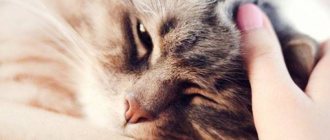If your cat is hiding or running away, it means she is not herself. She is afraid that she may be harmed or that her life is in danger. If your cat's behavior suddenly changes, there is likely a fear-based explanation.
If your cat is suddenly scared, consider whether anything has recently changed in her environment. Disruptions to the cat's daily routine can make a cat skittish, such as moving furniture and new people. Your cat may have encountered a predator near her home and no longer feels safe. Unexpected loud noises (thunder, construction and screaming) as well as illness and injury make cats feel vulnerable.
It takes a calm, relaxed owner to cope with the needs of a frightened cat. In fact, the owner's anxiety will make the cat even more nervous. You need to calm your cat, but how you approach this depends on the reason.
Balloon
This point also applies to sudden noise. However, the balls attract with their unusualness. Cats playfully watch them, then try to engage them in play with their paws. But then the balloon bursts.
This will serve as a lesson for the animal for the future. In the future, the cat is unlikely to want to play with suspicious objects again.
- Author: Elena Romanenko
Rate this article:
- 5
- 4
- 3
- 2
- 1
(168 votes, average: 4.2 out of 5)
Share with your friends!
What are cats afraid of?
There are a great many stories and videos on the topic “cat and vacuum cleaner”. Cats, with rare exceptions, are afraid of loud sounds from electrical appliances: electric meat grinders, vacuum cleaners, washing machines, even electric razors. The fact is that their hearing is extremely developed; animals have access to ranges that humans have never even dreamed of: in a cat the indicator fluctuates up to 65 kHz, while in humans it is only 20 kHz.
A cat can be scared of anything: a stranger, another animal. Cats are afraid of unpleasant odors, water, changes in surroundings, and sharp sounds.
Water is one of the main cat fears
Cats have individual phobias. There are two cats living in the house. The first one is not afraid of almost anything. Loves to swim and play with tangerines. Even sharp claps and shots are tolerated like a gun dog. But he is terribly afraid of mice. The second one is even afraid of his own shadow, but he catches rats perfectly.
How is fear expressed?
The set of external manifestations of fear is standard: the cat presses its ears and tail, meows, tries to run away from the irritant and hide.
It’s worse when fear causes an attack of aggression in the animal: the cat arches its back, hisses, and whips its tail on the sides. In a second, the fluffy ball turns into an evil monster. In these cases, the owner needs to be careful and attentive. Despite its small size, a cat can cause serious injuries with its claws and teeth.
There is no more dangerous animal than a scaredy cat
Getting rid of fears
Showing anger and aggression in cats is the first reaction to fear. The behavior of the owners should depend on how the frightened cat behaves.
Precautionary measures:
- First of all, protect yourself if you feel that your cat’s aggression is directed at you.
- A spray bottle of water helps as a “sedative.” When living together with a cat, this is a very effective means both for self-defense from an animal that is ready to attack, and for distracting the cat himself from fear and anger to a more pressing problem - licking his loved one.
My eight-kilogram Persian cat did not tolerate brushing. He scratched, bit and squirmed so much that it was very difficult to hold him. We had to take precautions: put on an oilcloth apron and wrap our hands in two terry towels to avoid injury.
If you need to move a frightened cat to another room, play it safe. Canvas tops will come in handy. As a measure of short-term submission, a blanket thrown over a cat is suitable.
The cat needs shelter
There are several ways to help your cat cope with fear:
- Retreating is an effective way to calm a frightened cat and calm an aggressive cat. By retreating a few steps, do not deprive the cat of the opportunity to retreat on her own. Remove from the room the irritant that caused her violent reaction - a stranger or another animal.
- If you do not feel a direct threat from a frightened cat, sit down or lie down on the floor. She will feel more confident “on equal terms.” And don't look the beast in the eye.
- Stop paying attention, ignore. Relax and look away. Talk in a low voice to yourself or to someone nearby. Sing something gently. This way the cat will understand that she is not in danger.
- And of course, a furry pet should always have its own hiding place, where it can feel safe and calm.
Provide your cat with a place where he feels safe
- When the cat has stopped showing signs of aggression and fear, approach it with a treat, but do not touch it. Let the animal decide for itself whether to approach you or not.
How not to behave with a scared cat
Under no circumstances should you anger or frighten a cat on purpose! It must be funny to watch how a frightened, roaring animal with flattened ears brushes off the offender with its paw. But this may end with the cat deciding: the best defense is an attack. In this case, it won't be surprising if he attacks when you don't expect it.
It is strictly forbidden to hit a cat or shout at it. Firstly, it makes no sense: cats do not know the feeling of guilt, and they do not perceive the word “impossible”. Secondly, the owner risks making a mortal enemy instead of the affectionate purr.
Be careful with an angry cat
Strong odors
These furry animals try to avoid intense scents. There is a simple and logical explanation for this - cats have a much more developed sense of smell than humans, so overly strong odors can irritate the cat’s receptors. This is not even a phobia, but a natural reaction of a living creature to an unpleasant factor.
The following odors are most unpleasant to cats:
- Citrus fruits are orange, lemon, grapefruit, etc. They are the strongest allergen for animals.
- Hygiene products. For example, deodorant, hairspray, shampoo.
- Construction chemicals, which include paint, glue, varnish. These odors are very irritating to the nasal passages.
- Many medications, vinegar and alcohol.
Cats have one unique feature. Thanks to the sensitivity of their nose, they can foresee disasters such as a cyclone or a volcanic eruption. The animal is capable of capturing the smallest particles of ash and dust. It is their smell that causes the alarm to sound.
Attention from strangers
Many cats don’t like it when strangers come to their home, so they hide from them. In this case, there is no need to forcibly pull the animal out of the shelter. Let it get used to it, watch new people. Quite often, unsociability is not a phobia, but a specific character trait of a cat, in which case you just need to come to terms with it.
A specific family member who once treated her rudely or punished her can also frighten a pet. In order to regain the animal’s trust, it is necessary not to force your affection on him and to speak to him more often in a calm and gentle voice.
Water
People who have cats have often noticed that their pet, at the sight of water and the upcoming swim, tries to run away and hide in a quiet place. But if it still ends up in the water, then a more pitiful animal cannot be found.
All this is explained by the fact that cats are terribly afraid of getting wet. In cats, the undercoat creates an air cushion that saves animals in heat and cold.
Wet cat fur can lead to illness because thermoregulation is disrupted. In addition, a cat's fur has an odor that can scare away prey.
Coming out of the water, the cat tries to dry out as quickly as possible. He begins to shake himself frequently and licks his fur nonstop.
Helping your cat cope with stress
Cats have a hard time with changing their environment; it is stressful for them. What to do if you can’t avoid a trip to the country, a trip to the veterinarian or hairdresser?
Two necessary conditions for the trouble-free movement of a cat are a calm owner and a comfortable carrier, which should become a second home for the animal. You cannot carry the animal in your arms.
Before traveling, prepare a mobile shelter for your cat - a comfortable carrier with hard walls, soft bedding and ventilation. For sound insulation and warmth, the carrier is wrapped with soft cloth on top. The cat should perceive the mobile house as a shelter where your pet can hide, say, after a doctor’s examination and calm down.
Required conditions after stress - peace and quiet
Habit plays an important role. If you plan to often take your cat with you on trips, you need to gradually accustom it to this from childhood. A pet that regularly travels in its portable home will not create problems during its next voyage.
Medicinal methods
In order to prepare the cat for stress, which cannot be avoided, special medications based on herbal ingredients are used. For example, Fitex contains hops, motherwort, valerian, and Baikal skullcap. In addition to these herbs, Stop-Stress contains phenibut. The drug Kot Bayun is available in the form of infusion and tablets. It includes extracts from a dozen medicinal plants.
To overcome stressful situations, calming cat food containing herbal sedatives and special collars with pheromones are also produced.
A calming collar with pheromones will help the animal cope with a stressful situation
Table: Calming products for cats
| A drug | Active substance | Release forms | Dosage | Effect | Price |
| Stop stress | Active ingredients: phenibut (aminophenylbutyric acid) + extracts of medicinal plants (catmint, motherwort, hops, Baikal skullcap). | Drops and tablets | 1 drop per kg of animal body weight twice a day; or 0.25 tablets with a weight up to 5 kg, 0.5 - with a weight from 5 to 10 kg; for body weight more than 10 kg, give a whole tablet. | Long lasting calming effect | 145 rub. |
| Fitex | Plant origin. The composition of the drug includes the following extracts: - thick extract of valerian officinalis (valeriana officinalis) - dry extract of motherwort (leonurus quinquelobatus gilib) - dry extract of common hop (humulus lupulus) - dry extract of Baikal skullcap (scutellaria baicalensis georgi) 1 ml of the drug contains 100 mg of the sum of dry and thick extracts. Does not contain sugar or ethyl alcohol. | Drops | 3–5 drops three times a day | Mild sedation | 130 rub. |
| cat Baiyun | Only plant components, contains aqueous extracts from plant materials: oregano herb - 0.45%, sweet clover herb - 0.23%, rhizomes with valerian roots - 0.23% and phytocomplex - 1.45%, containing extracts of flowers and fruits hawthorn, hop cones, motherwort herb, peppermint leaves, ivy grass, catnip herb, lemon balm herb, meadowsweet flowers, St. John's wort herb, thyme herb, cudweed herb, hillwort herb, nettle leaves, roots, rhizomes and herb of evasive peony , and as an auxiliary substance - distilled water - up to 100%. | Infusion and tablets | A single dose for infusion is 2 ml (half a teaspoon); for tablets - 2 pieces. Frequency of administration: 3–4 times a day. Tablets are used starting from the age of 10 months of the animal. | Long-term sedative effect: stabilization of the animal’s condition for 5–7 days | Drops - 132 rub. per package. Tablets - 115 rub. |
| Xylazine | A synthetic compound - a derivative of thiazine Xyl as an active substance in 1 ml contains 20 mg of xylazine hydrochloride, as well as excipients: sodium metabisulfite - 1 mg, citric acid - 10 mg, benzyl alcohol - 0.01 ml, sodium hydroxide (for pH correction = 5.0) and water for injection - up to 1 ml. | Injection | According to the instructions for use, 0.25 ml per 100 kg of weight is used for sedation; for sedation accompanied by muscle hypotonicity and analgesic effect - 0.5 ml; for immobilization and pain relief 1.0 ml; for long-term surgical intervention 1.5 ml (this dose is used only for adult animals). | Calming, analgesic, muscle relaxant | 630 rub. |
Photo gallery: sedative medications
Fitex drops for cats calm and heal
Xylazine has a calming and analgesic effect
Drops for cats Stop Stress have a long-lasting calming effect
Cat Bayun - dietary supplement for a calm life of a cat
No one is immune from stress and fear, not even cats. Each domestic cat has a unique character and temperament. No one knows how your pet will behave in an unusual situation. Only love, care and the right reaction will help owners of tailed pets find the right approach to their animal and help them cope with emotional turmoil.
